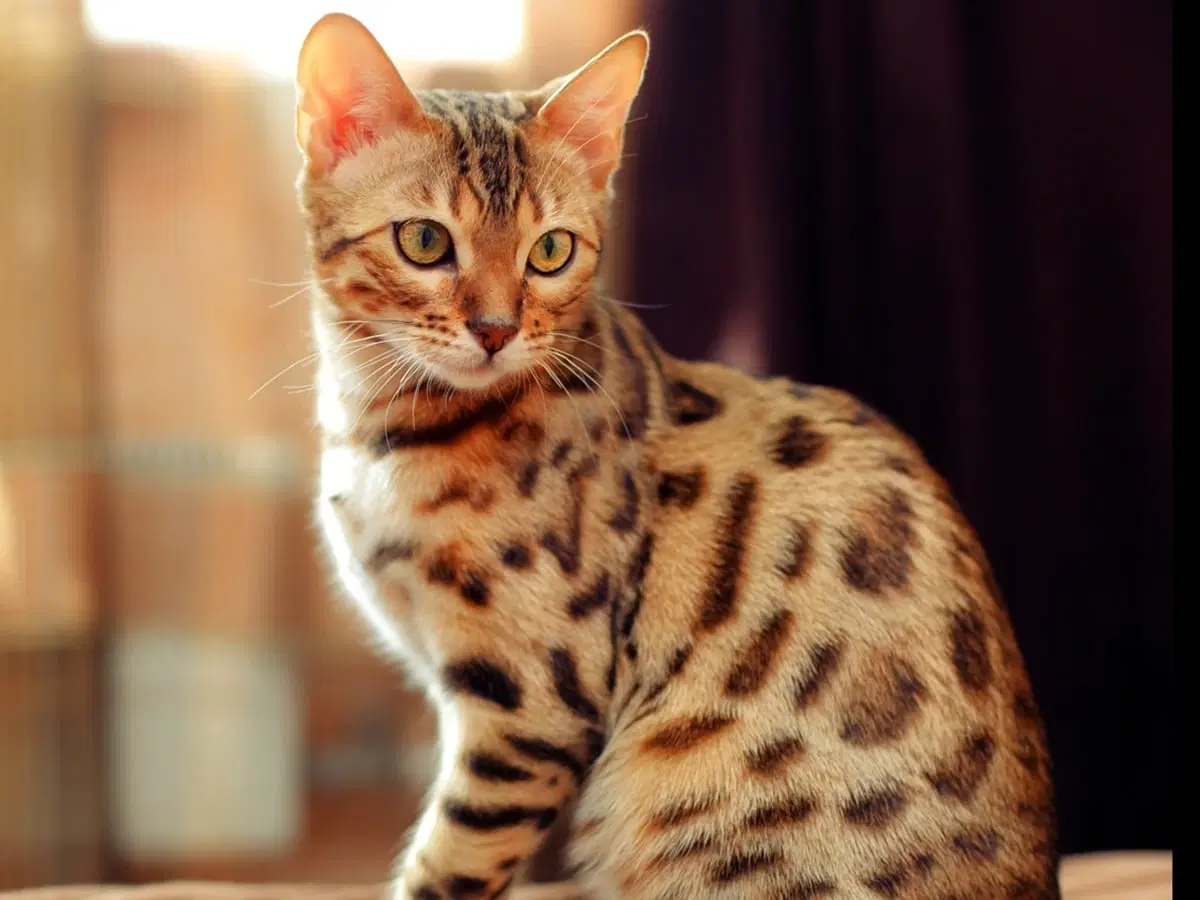Bengal cats, with their mesmerizing spotted coats and captivating wild appearance, have become increasingly popular among pet enthusiasts. But beyond their stunning looks, Bengals boast a unique personality that sets them apart from other domestic cat breeds. This comprehensive guide explores the history, temperament, needs, and potential challenges of Bengal cat ownership, helping you decide if this dazzling feline friend is the perfect fit for your home.
A History Steeped in Wild Charm
The Bengal breed boasts a fascinating origin story. Unlike most domesticated cats, Bengals are not descended solely from felis catus, the common house cat. In the 1960s, Jean Sudduth, a California breeder, embarked on an ambitious project to create a domestic cat with the alluring markings of the Asian Leopard Cat. By selectively breeding Asian Leopard Cats with domestic shorthairs, she laid the foundation for the Bengal breed we know today. Recognized for championship status in the 1980s, Bengal cats continue to captivate cat lovers with their wild looks and energetic personalities.
A Playful and Intelligent Companion
Bengal cats are renowned for their playful and energetic nature. Inheriting their wild ancestry, they possess a love for climbing, exploring, and engaging in interactive games. Their intelligence allows for training with positive reinforcement techniques, creating a fun and rewarding bond between you and your feline friend. With proper stimulation, Bengal cats can become incredibly devoted companions, showering their owners with affection and playful antics.
Owning a Bengal: Considerations and Potential Challenges
While undeniably captivating, Bengal cats present certain challenges that potential owners should consider:
High Energy Levels: Bengal cats require plenty of physical and mental stimulation. Homes with plenty of vertical space for climbing and scratching posts are ideal for preventing boredom and destructive behaviors. Here are a few more tips for making sure your cat gets enough exercise.
Training Requirements: Their intelligence can come with a streak of independence. Consistent training using positive reinforcement methods is crucial to ensure respect for boundaries and responsiveness to commands.
Vocal Nature: Bengal cats are known for expressing themselves vocally through meows, chirps, and even growls. This can be a concern for those living in apartments or with noise sensitivities.
Expert Insights From Spot
Bengals are generally healthy cats, but like most breeds, they can have specific veterinary needs. Internal data from Spot Pet Insurance highlights some of the most frequent claims Bengal cat owners submit:
Clinical Checkups: $502.58 per visit
X-rays: $1,065.54 per claim
Deworming: $231.62 per claim
Pet insurance can help pet parents with the cost of these unexpected veterinary bills. Learn more about what pet insurance covers and if pet insurance is worth it.
A Rewarding Relationship
With their captivating appearance, playful personality, and intelligence, Bengal cats can make wonderful companions for those who can provide the appropriate environment and care. Understanding their needs and providing ample stimulation is key to building a strong and rewarding relationship with your Bengal feline friend. If an active lifestyle and engaging playtime are part of your routine, a Bengal cat may be the perfect addition to your home. However, if you crave a more low-key feline companion, other breeds may be better suited to your preferences.
Bringing Home a Bengal
Bengal cats are undeniably captivating creatures, but their unique needs require careful consideration. If you can provide a stimulating environment, ample playtime, and loving care, a Bengal cat can be a loyal and rewarding companion for over a decade. Remember, responsible pet ownership starts with choosing the right breed for your lifestyle. So weigh the pros and cons carefully before welcoming a Bengal beauty into your life.

Mostly a tech person, always a pet person. I am dedicated to improving the lives of pets and their humans with technology. Off-duty, I enjoy writing about the misbehaving of computer programs and my two Aussiedoodles, Calvin and Hobbes.












